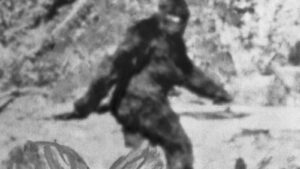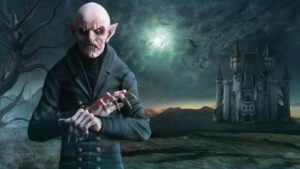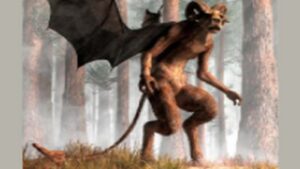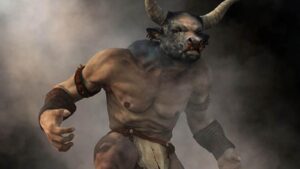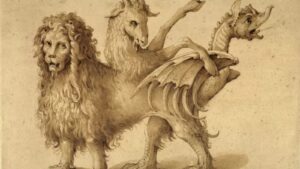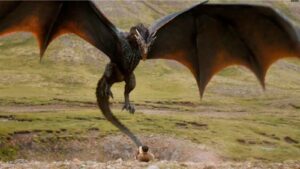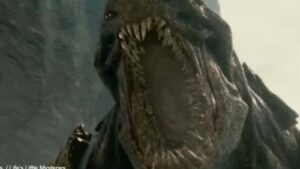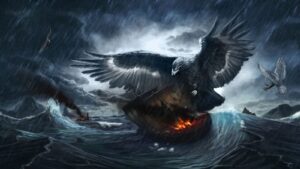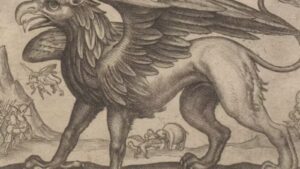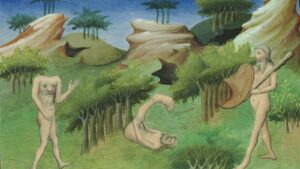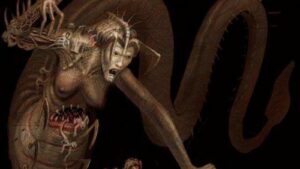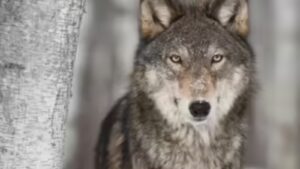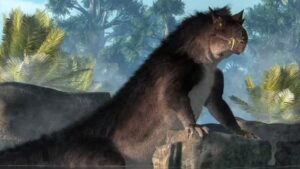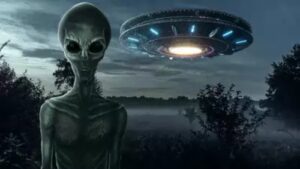Top 20 Mythical creature that actually exist
Summary
Top 20 Mythical creature that actually exist. Typhon was a serpentine giant and the most deadly creature in Greek mythology, because in addition to being a monster, he was also a god. Ever since we started telling stories, mythical creatures […]
Top 20 Mythical creature that actually exist. Typhon was a serpentine giant and the most deadly creature in Greek mythology, because in addition to being a monster, he was also a god. Ever since we started telling stories, mythical creatures have fascinated and terrified humans with their unnatural physiology and deadly power. This is why their tales have endured for centuries. Such as Typhon, it was a serpentine giant and the most deadly creature in Greek mythology, because in addition to being a monster, he was also a god. And there is many more. Here is the list of top 20 Mythical creature that actually exist.
Video: Top 20 Mythical creature that actually exist
Bigfoot
This big boy is thought to be the missing links between humans and apes—we’d know for sure if only we could find one. The legend of Bigfoot comes from a couple of different places including Native American mythology and folklore surrounding European ‘Wild Man’ stories. In fact, Bigfoot has his very own official FBI file, but, so far, despite myriad claims from several sources across the U.S., no one has managed to definitively prove that the Sasquatch exists.
Video: Top 20 Mythical creature that actually exist
Vampires
We can’t have a list of mythical creatures without including vampires. The world’s most famous vampire is undoubtedly Bram Stoker’s Dracula, who Stoker reportedly modeled after Romanian Prince Vlad Tepes, more popularly known as Vlad the Impaler, pictured. The amazing fact is live Science notes that while most people can name a few vampiric characteristics, there are actually no set parameters for what a vampire can and can’t do because there are “no firmly established characteristics.”
Zombies
This mythical creatures are terrifying. Especially with the facelift they’ve received in recent years thanks to advancements in technology. Movie zombies are fast and lethal. They’re absolutely ravenous for human flesh and nothing—save for a bullet to the head—can stop them since they’re already technically dead. This, coupled with the interesting fact that zombies have the ability to turn hordes of people into undead monsters within minutes earns them a spot on our list. Though there are no strong evidences, however some people believe the live among us.
The Jersey Devil
This horny devil haunts New Jersey’s Pine Barrens and has reportedly been around since 1735. This creature is grotesque in appearance, having a horse-like head with some kind of horned protrusions, and walks on its two hind legs which end in cloven hooves. Some versions of the Jersey Devil myth state that the creature was born to one of Daniel Leeds’ wives who was a witch. Shortly after the beast was born, it sprouted wings, let out a loud screeching yell, and flew off into the night.
Sirens
Sirens are another mythological species that have found a home in modern times. There are movies and TV shows about the seductresses with beautiful and enchanted singing voices who draw sailors to their deaths. Sirens are also mentioned in Homer’s Odyssey, where Odysseus famously had his crew tie him to the mast of the ship because he wanted to hear the Siren song. Odysseus was cautious and has his crew fill their ears with wax so that they would be unaffected by the sound. And it worked. Don’t be amazed to see in the reddit stories, because that one is a real scary story.
Werewolf
The werewolf myth is so prevalent across multiple cultures that it’s hard to pinpoint exactly where it originated. Werewolves have had their stories told millions of times over with each iteration giving the mysterious creatures a different power, a different reason to shift from a human into a beast, and providing humans with different methods of killing them. Greek mythology introduced werewolves into its lore with the tale of the king of Arcadia, Lycaon, who tried to serve a sacrificed child for Zeus to eat.
The Basilisk
According to lore, the Basilisk had the power to kill people with a single glance—similar to Medusa although the two are not interchangeable. The Basilisk has been around for a long time, with the earliest written reports dating back to a mention in Pliny the Elder’s Natural History in 79 A.D. The Basilisk was often referred to as the king of serpents and has been described in varying detail as being a mix of snake and rooster. The Basilisk is the very definition of the saying, “if looks could kill.”
The Minotaur
Whose birth name was Asterion, is another fabled creature from Greek mythology. The Minotaur was part man, part bull, the product of an affair between Queen Pasiphaë and a bull—hence the Minotaur’s weird anatomy. In order to keep the Minotaur and his ravenous hunger for humans locked away, Daedalus and his son Icarus—you know, the one who flew too close to the sun—built a maze to contain it at the behest of King Minos, Pasiphaë’s husband.
Chimera
The mythological Chimera is a terrifying creature that features a fire-breathing lion’s head attached to a goat’s body and ending in a serpent tail. There are varying versions of what a Chimera actually looks like with some iterations giving the creature three heads—a lion, a goat, and a dragon—among other interesting interpretations. According to Greek mythology, the Chimera is the offspring of the monster Typhoeus and his partner, Echidna, who was half-woman half-snake, what a scary true story. Creepypasta!
Most amazing top 10 starting with
Dragon
Dragons are badass—they can breathe fire, fly, and are kind of indestructible. These legendary creatures have also endured through the centuries, becoming especially popular in the last couple of years thanks to the book series turned smash hit TV show, Game of Thrones. This is why they come in second in our ranking. Live Science reports that “huge, flying serpents were described at least as early as the age of the ancient Greeks and Sumerians” and notes that interpretations are varied across cultures.
The Kraken
The scary mythical creatures is one of the creepy monsters ever imagined. One of the earliest mentions of the gigantic cephalopod came from Swedish King Sverre of Norway in 1180. It was said that the creature was so massive it could eat maritime crews’ whole and sink ships in an instant. Although descriptions of the beast in folklore vary to some degree, the general consensus is that the Kraken was likely Architeuthis dux—more commonly known as the giant squid.
Read More: Mythologists Reveal the Most Powerful Creatures to Fear in 2025
Rocs
The Roc is an enormous bird of prey found in mythology originating in the Middle East. The giant bird was popularized in various fairy tales and folklore from the region, and there’s a Roc in One Thousand and One Nights as well as many other popular stories. There are analogs in the fossil record, which could easily have given birth to the myth. One such creature was the Elephant Bird of Madagascar, though the myth could have easily been borne by sailor’s accounts of large eagles capable of carrying off newborns lamb.
Griffins
The Griffin is a mythological beast, which has the body, tail, and hind legs of a lion while the wings, forelegs, and head are that of an eagle. As the myth developed through the medieval period, it evolved into a Christian symbol of divine power, which was used as a guardian of the divine. Symbols of Griffins can be found throughout Europe, North Africa, and Asia, with the earliest examples being found in the Egyptian city of Hierakonpolis. That find was dated to between 3300 and 3100 BCE.
Blemmyae
Sailors brought back tales of so-called “wild men” of Asia and Africa, which gave rise to the tale of the Blemmyae. These people were described as “headless men” in Herodotus’ The Histories. They were said to be covered with hair, and they didn’t have heads, which left their facial features on their chest. Europeans were fascinated by what they heard, and the legend grew for centuries. The Blemmyae were written about by Pliny the Elder, Sir Walter Raleigh, and there was even mention of them in Shakespeare’s Othello.
Now the top 5 mythical creature that actually exist
Lamia
Lamia in ancient Greek mythology, was a child-eating monster and, in later tradition, was regarded as a type of night-haunting spirit (daemon). In the earliest stories, Lamia was a beautiful queen of Libya who had an affair with Zeus. Upon learning this, Zeus’s wife Hera forced Lamia to eat her own children, the offspring of her affair with Zeus, and afflicted her with permanent insomnia. Zeus, taking pity on her, endowed Lamia with the gift of prophecy and the ability to temporarily remove her eyes to relieve her sleeplessness.
Unicorns
Unicorns are white horses with a large, spiraled horn sticking out from their foreheads. They are often associated with magic and have been described for most of history throughout many world cultures. They were described in ancient Greece by Pliny the Younger and others, and the re’em, as it is described in the Christian Bible, resembles the unicorn. Over time, this description morphed through tall tales into the unicorn, but another source in Europe also helped push the belief in the majestic beast.
Hobbit
Everyone knows this real creature saved Middle-earth from a small piece of jewelry, but what’s less common knowledge is the fact that a small-statured race of proto-humans really did share the Earth with larger human species between 190,000 and 50,000 years ago.In 2003, LiveScience says archaeologists found the remains of a 3-foot-tall adult female in a cave on an Indonesian island. Since that time scientists have found more examples of hobbits, known by the rather less-endearing scientific name “Homo floresiensis.”
Dire Wolves
Dire wolves lived during the Pleistocene, between 250,000 to roughly 10,000 years ago. Unfortunately, real dire wolves were not really the size of ponies, although no one denies the potential awesomeness of pony-sized wolves. They were larger than modern wolves, though, and could weigh as much as 200 pounds — almost twice what a very large modern wolf might weigh. More than 200,000 dire wolf specimens have been uncovered at La Brea, representing more than 4,000 individuals.
The Bunyip
It is a little like Australia’s Loch Ness monster in that it lives in the water and has never been photographed despite the fact that hundreds of people have seen it. But the legend might have actually had rational origins. In 1839 the remains of an animal called a diprotodon was discovered in Australia, which proved that a huge, rhino-sized marsupial similar in appearance to a wombat once roamed the outback.
Read More: Mythologists Reveal the Most Powerful Creatures to Fear in 2025
Aliens
Most stories of alien visitation here on Earth can be explained by military testing, weather balloons, people who are hoping to write best-selling memoirs about their experiences with gray aliens, and Fox Mulder. There’s no doubt that humans are obsessed by the idea of life on other worlds, and with good reason — because there is almost certainly real life on other worlds. It’s just not likely to have ever made it as far as Earth. According to Space.com, NASA scientists are certain we will eventually find life on other worlds, and some scientists believe it will happen in the next two or three decades.
Which one terrified you the most? What happen if they still alive today? Share your thoughts in the comment section.
